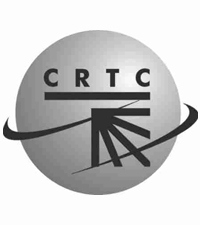Canada’s largest telephone and cable companies must provide the highest broadband speeds available – even when they ‘sub-out’ bandwidth to smaller Internet service resellers.
It’s not just about high speed. Internet access is seen as a basic service – almost a citizen’s right, if you will – and much like basic phone service, should be available to all.
That’s the approach of the country’s telecom regulator, as well as some industry groups and consumer advocacy agencies.
 The Canadian Radio-television and Telecommunications Commission says large companies like Bell and Rogers must make their existing Internet access services available to alternate Internet service providers (ISPs) at speeds that match those offered to their own retail customers.
The Canadian Radio-television and Telecommunications Commission says large companies like Bell and Rogers must make their existing Internet access services available to alternate Internet service providers (ISPs) at speeds that match those offered to their own retail customers.
In its decision, the CRTC upheld earlier decisions that required incumbent telephone carriers to provide so-called ‘speed matching’.
“Access to broadband Internet services is a key foundation for the digital economy,” said Konrad von Finckenstein, the CRTC Chair. “The large telephone and cable companies are bringing their fibre networks closer to Canadian homes and businesses, which allows for faster Internet connections. Requiring these companies to provide access to their networks will lead to more opportunities for competition in retail Internet services and better serve consumers.”
Internet services add up to more than $6 billion in revenue, a small portion of the account the country’s C$41 billion telecommunications industry, according to the data in this PDF version of a July 2010 CRTC report. Over 90 per cent of that market is controlled by major telecommunications and cable companies like Bell, Bell Aliant, Rogers and Telus.
Small ISPs account for less than eight per cent of the market.
The large telephone companies have been investing in upgrades and expanding their networks. In recognition of these investments, the CRTC will allow them to charge competitors an additional 10-per-cent mark-up over their costs for the use of their wholesale Internet services’ higher-speed options.
Reaction from ISPs is understandably split.
For example, MTS, Manitoba’s phone and Internet provider, says it endorses the CRTC’s decision; Bell and Telus are hoping the federal cabinet will review the issue, having petitioned it to do so after a similar CRTC decision in 2008.
The Canadian Association of Internet Providers (CAIP) was one of several parties who made presentations in early June at hearings overseen by the CRTC.
“The CRTC has made it abundantly clear that they consider adequate competition is not provided by a duopoly of telephone and cable carriers,” said Tom Copeland, CAIP’s Chair. “We have been making this argument for many years.”
“T[he] speed matching decision was long overdue and could have gone further in establishing the foundation required for competitors to deliver greater price discipline and innovation to consumers. We will continue to encourage the CRTC to establish the regulatory framework needed to continue to serve our customers in the future,” Copeland added.
The decision was also applauded by the Public Interest Advocacy Centre (PIAC) which represented consumer groups at the hearings.
“It is a common sense decision that speaks to the need for Canadians to have more choice, better service and prices,” Michael Janigan, Executive Director and General Counsel of PIAC, said. “The Commission was careful to balance the needs of the suppliers of the facilities to recover their investment with the requirements of competition and the needs of Canadian customers. We may accordingly see some greater efforts to fracture the current broadband duopoly.”
What’s more, PIAC is calling for broadband access to be seen as basic service, much in the same way that telephone service was established as a need for every Canadian in the last century.
The report, titled ‘Is Broadband Basic Service?’ describes developments in Europe and elsewhere that have made broadband service a basic right for citizens. It also describes the models that have been evolved internationally to meet the goal and the principles that should be engaged in designing the delivery structure.
The report states that ‘access to broadband has important economic, social and cultural ramifications for Canadians and without it, Canadian consumers risk falling behind in today’s increasingly online interconnected world.’
The Public Interest Advocacy Centre is an Ottawa-based consumer organization specializing in telecommunications services.
Funding for the research used in the report came from Industry Canada’s Contributions Program for Non-Profit Consumer and Voluntary Organizations, but the organization notes the views expressed in the report are not necessarily those of Industry Canada or the Government of Canada.
The Canadian government is in the process of developing and promoting its own digital strategy and broadband policy, but countries some thirty countries worldwide already consider broadband as a public service to which every citizen should have access.
According to the International Telecommunication Union (ITU), Canada ranks fifth overall when comparing broadband access and costs ratios.
| Country | Fixed broadband subscriptions per 100 inhabitants, beginning 2010 |
Affordability of fixed broadband, as a percentage of monthly income |
| UK | 29.8% | 0.63% |
| USA | 27.1% | 0.5% |
| France | 31.1% | 1.02% |
| Germany | 30.4% | 1.23% |
| Canada | 29.7% | 0.71% |
| Australia | 25.4% | 0.77% |
| South Korea | 33.8% | 1.41% |
| Brazil | 7.5% | 4.58% |
| Russia | 9.2% | 1.66% |
| India | 0.7% | 5.84% |
| China | 7.7% | 7.19% |
Source: ITU
In May of this year, some 52 separate projects were announced in Canada by the Ministry of Industry, and its Broadband Canada: Connecting Rural Canadians program. The projects, in nine provinces and territories, are designed to bring broadband Internet access to hundreds of thousands of households.
“I am delighted that … Canada will soon have access to high-speed Internet service for the first time,” said Industry Minister Tony Clement at the time. “Canada is poised to make great strides into the digital economy of the 21st century, and this news is a major part of our strategy.”
The federal government’s 2009 budget provided $225 million for the development and implementation of a strategy to extend broadband coverage in Canada, especially in unserved and underserved areas.
Seen in the light of the CRTC’s decision, those underserved areas may in fact stretch from coast to coast to coast.
So, What’s Your Tech?
Do you get Internet access from one of the major players, or from a smaller reseller company?
Either way, is it fast enough for you? Fast enough for the 21st Century?
Should Internet service be seen as a basic service, like phones – or water?
submitted by Lee Rickwood



